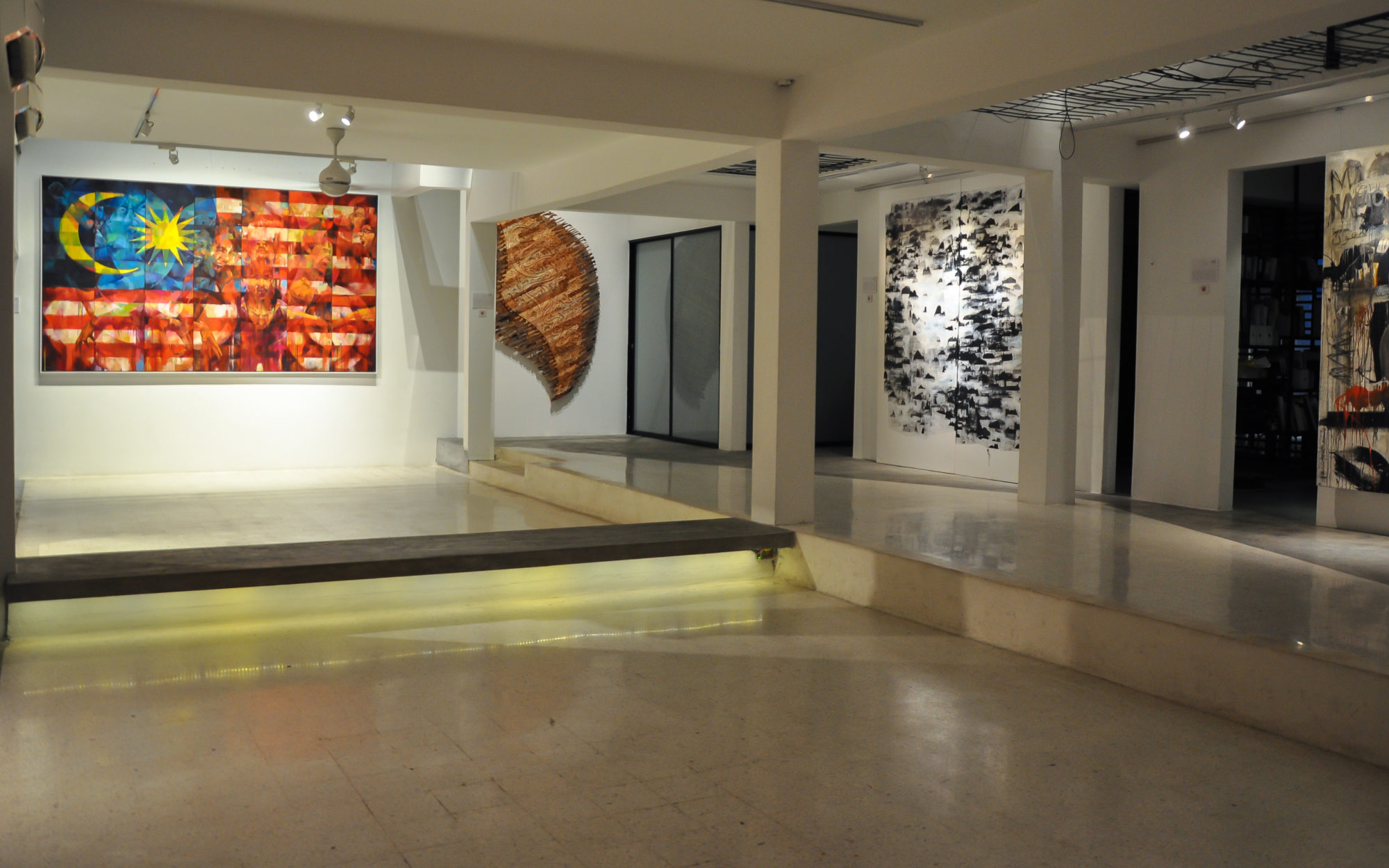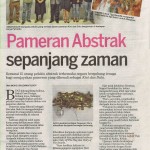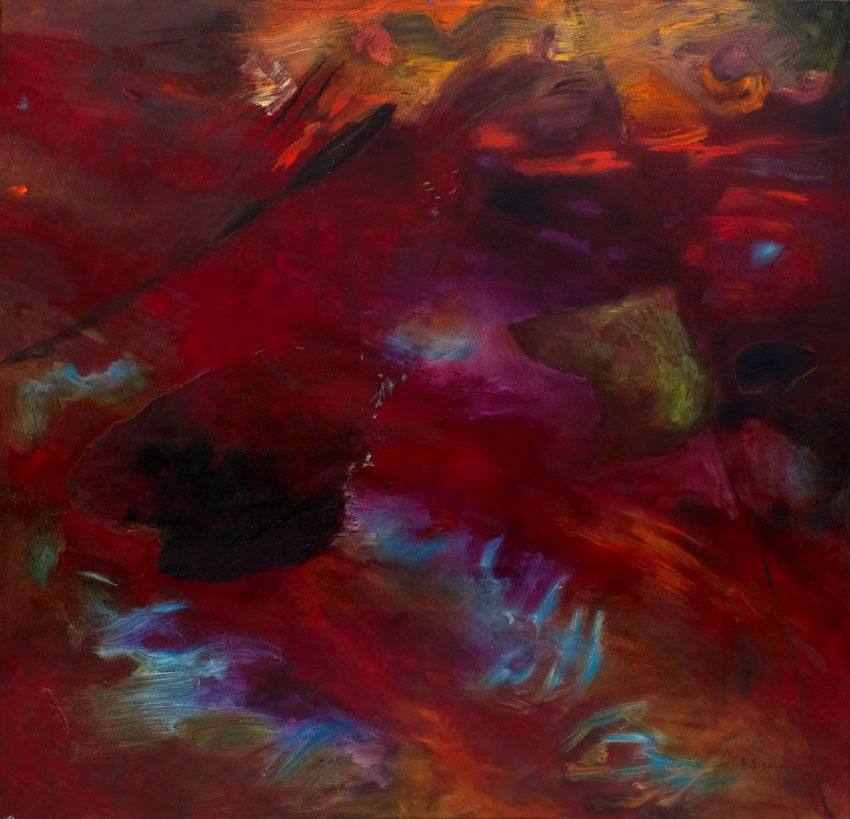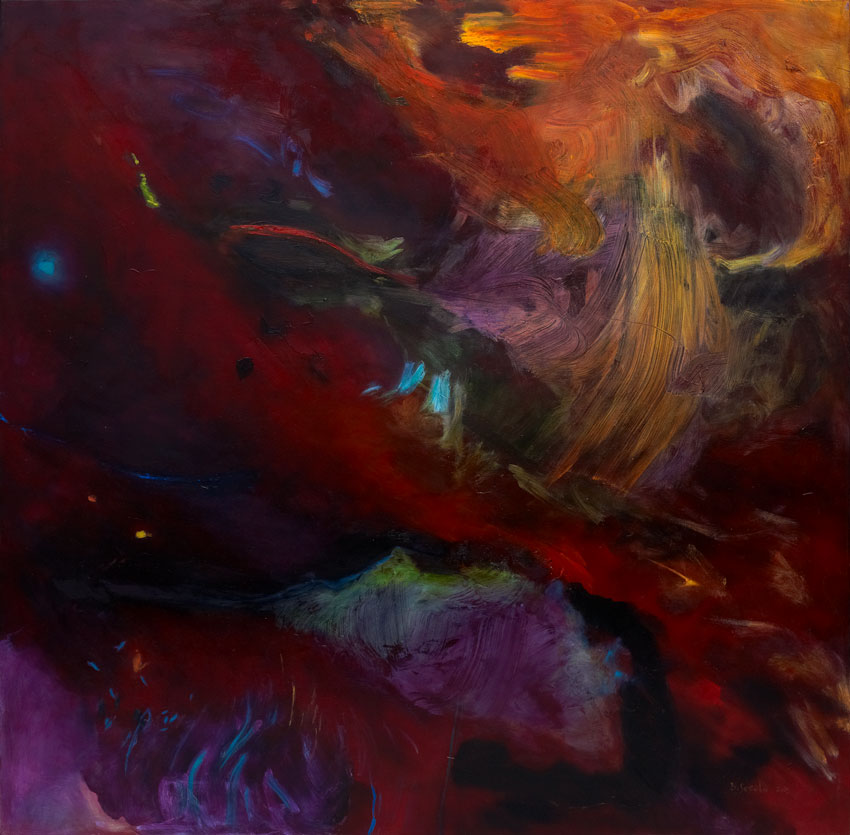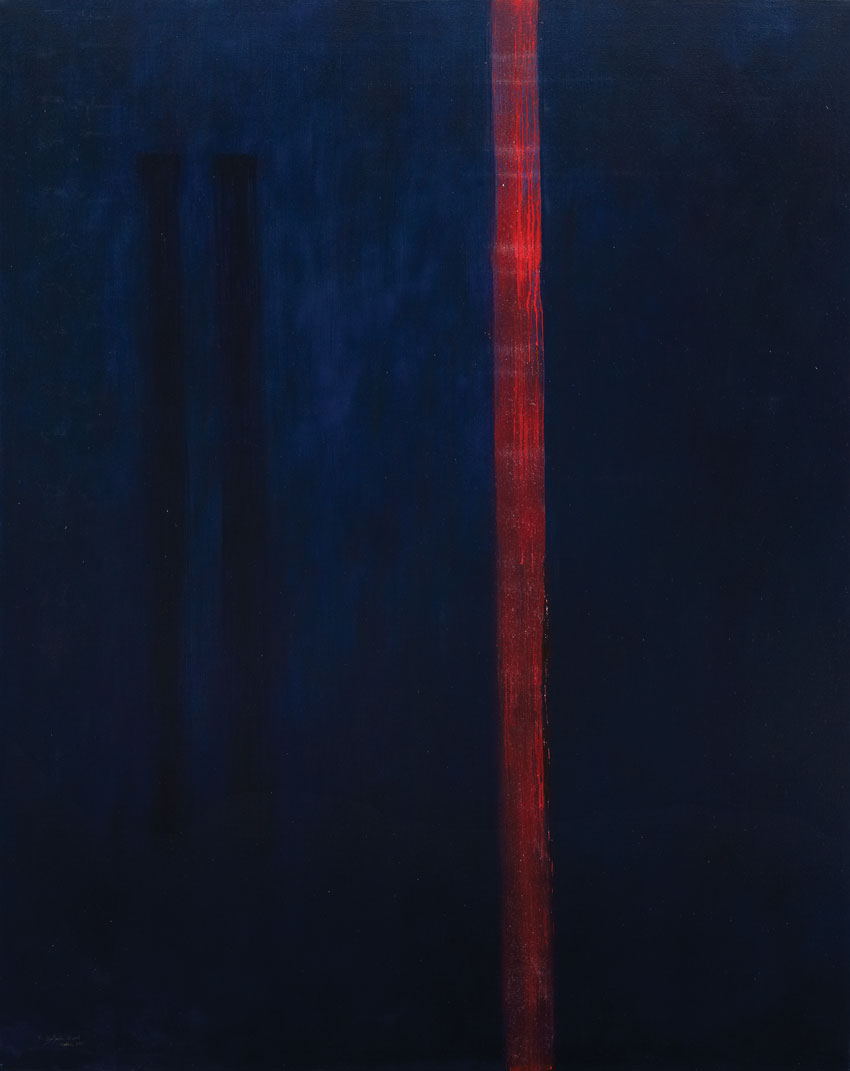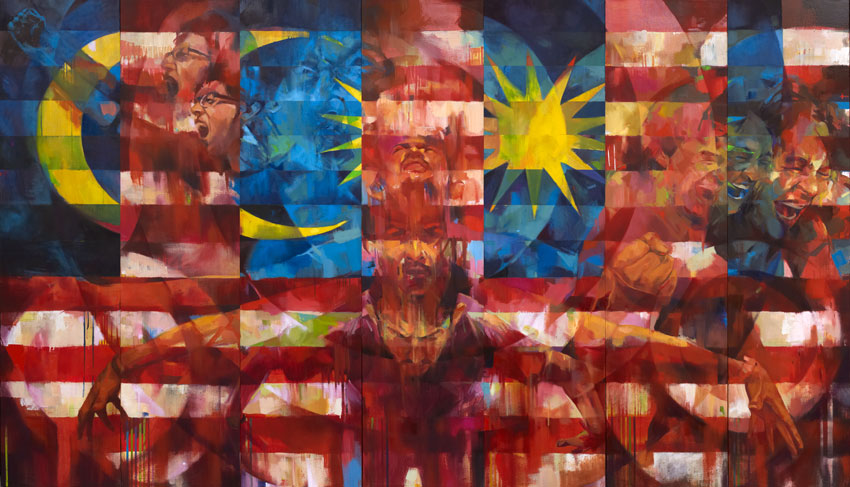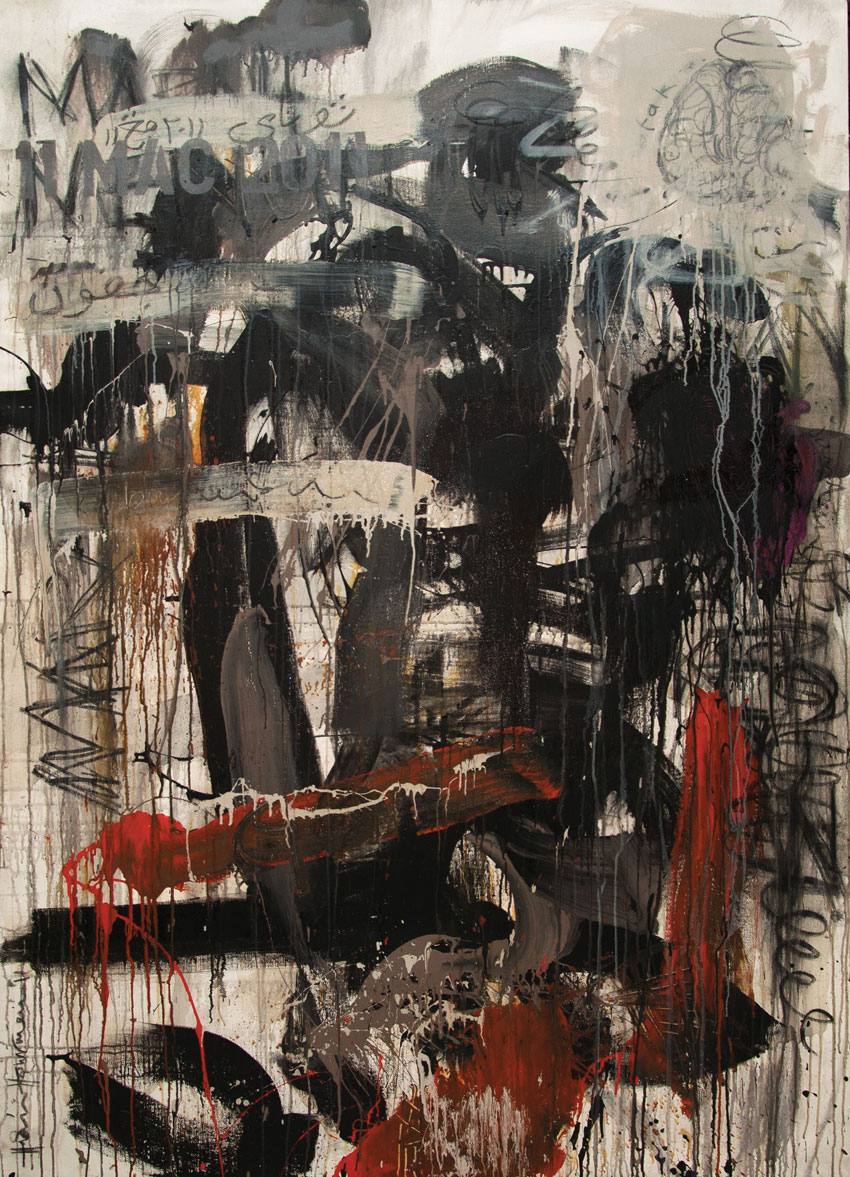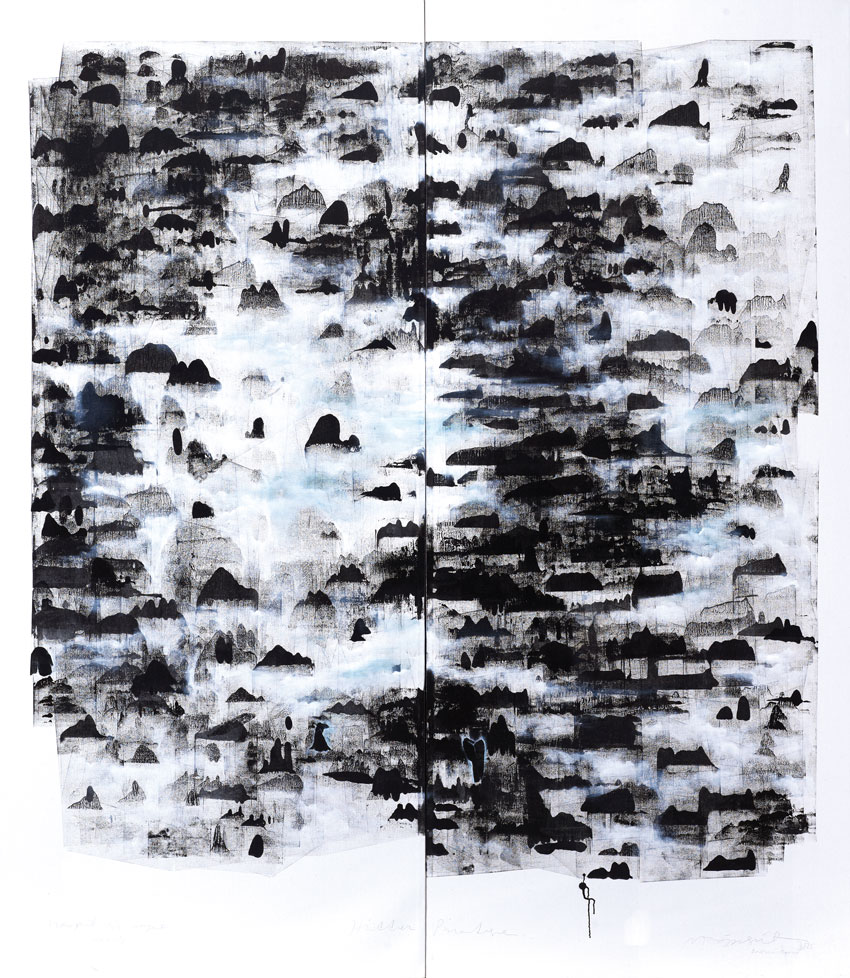Exhibition Period: 31st July 2015 - 23rd August 2015
An Introduction by Benedetta Segala
Wilhelm Worringer’s Abstraction and Empathy was published in 1908 and was a critical and commercial success. His main thesis is that empathy and abstraction are the two main catalysts of art and both are equally valid. Primitive societies that have a “dread of space” and are fearful of the outside world lean to abstract art because it serves as an escape from the outside world, a “refuge from appearances.”(p.16)
Modern societies tend to have empathy in art because “the urge to empathise is a happy pantheistic relationship of confidence between man and the phenomena of the external world.” In other words man finds enjoyment in forms he sees in the world. Worringer repeats the phrase “Aesthetic enjoyment is objectified self-enjoyment” many times in the first chapter. Worringer announces abstraction as a valid contemporary art practice. “Having slipped down from the pride of knowledge, man is now just as lost and helpless vis-a-vis the world-picture as primitive man.”
It is interesting to note he mentioned that people were confused about realism (naturalism) and the legacy of Renaissance art. Many people, according to Worringer, assume Renaissance artists were copying nature, a mere imitation. The reality was “not because the artist desired to depict a natural object true to life in its corporeality, not because he desired to give the illusion of a living object, but because the feeling for the beauty of organic form that is true to life had been aroused and because the artist desired to give satisfaction to this feeling.”(p.27)
In what ways do artists express their relationship to the world? Can abstraction be empathetic?
Abstract depends solely on our perception and allows us to see different layers of reality simultaneously, sidestepping the shape through to a more emotional effect. It’s a kind of visual thinking; it’s the meeting of an idea with the artistic feeling; it’s the faculty of the human spirit to translate life into a sensitive matter ... Beyond the narrative reality. ABSTRAK : KINI DAN DULU is a major exhibition willed by Core Design Gallery to give a clue about what is abstract art today in Malaysia, in all its nuances, accents and characters. The artworks in the exhibition are divided into three different categories to help viewers understand abstraction in contemporary Malaysia.
The first category is three-dimensional art and installations by artists like Suhaimi Fadzir, renown for his deconstructivism works to younger artists such as Annabelle Ng, with her aerial metaphysical installations and Anniketyni Madian, with her abstract geometric wood sculptures depicting Sarawakian symbols.
The 2nd category, mixed media, includes artists like Fauzin Mustafa with his symbolic and nature-themed works, the eclectic and conceptual artist Susyilawati Sulaiman and Faizal Suhif, who evokes Arte Povera through his semi-abstract printmaking.
And in the 3rd and final category, paintings, viewers will be able to view artworks by leading Abstract Expressionists such as Yusof Ghani and Awang Damit, symbolic non-figurative paintings by the illustrious Anuar Rashid, the abstract and poetic expression of Husin Hourmain, the informal abstraction of Fauzulyusri, expressive Ali Nurazmal Yusoff’s abstract origins, the vibrant minimal chromaticism of Shafarin Ghani, the neo-expressionist style of Husni Osman and ultimately an external glance from the lyrical abstract Italian artist as well as curator of the exhibition, Benedetta Segala.
The exhibition aims at creating awareness to understand the underlying concepts and basics of non-representational art. Non-representational art allows one to explore the beyond and unknown, it expands the taste of the individuals to the unusual and helps them understand beyond the norms of image making. Perhaps to open up the minds to the various ways of expressions and thoughts….a way to search deep within ourselves.
...through the Western lens
In the West, abstract art appeared in the early 1900s by the need of a different relationship with the object, to be able to reflect directly the empathetic nuances of reality, overcoming the contradictions of matter.
The planes intersect, the surfaces become vibrant, the gesture becomes dynamic in a search of the overwhelming emptiness of the space. It’s a self-conception that sees the reality of the artwork come together as one with the reality of life; becoming one and breaking the barrier of naturalism. Nature is no longer narrated (the visible surface of things - W. Worringer, the German art historian who coined the term Expressionism and wrote Abstraction & Empathy) but turned into germinal principle... As the molecular match of culture and nature, senses and intellect, flesh and spirit come together in unity to the birth of abstract art, albeit the varying conditions in the contemporary human era…of man and machine.
We find in the historical avant-garde of the early century, confidence in humanity was not just mindless adherence to the idea of progress, but rather an intellectual awareness of the precariousness and mutability of reality. There abstract art was born during a period of major wars and proletarian protest, as the tension towards an art of inner liberation, of rebirth of the pleasure’s principle.
“While the impulse of empathy (figurative representation) is conditioned by a happy rapport of pantheistic trust between human beings and the phenomena of the external world, the impulse towards abstraction is a consequence of a deep interior unease experienced by people when confronted with these phenomena, and corresponds, in the religious sphere, to a strongly transcendental accentuation of all the concepts.” (Wilhelm Worringer, Abstraction and Empathy)
This artistic expression was configured across two main streams of thought: the “formal”, relevant aspects of analysis and synthesis of consciousness through the inner logic of the signs as in Bauhaus or Analytical abstraction; and the “symbolic”, of the spiritual and idealistic tensions to detect the mysterious meaning of things beyond their visible appearances as in the Orphic Cubism or in the expressive asceticism of the Suprematism.
However these two paths intertwine and blend in continuously along the years and all of them wanting to justify the art in a manner more noble and intellectual. Expressing themselves in the rejection of the canons and traditional genres, dear to the bourgeoisie and the merchant mentality, thereby birthing to a grand number of avant-garde and post avant-garde which of the main: Futurism 1909 - Orphic Cubism 1912 - Rayonism 1913 - Constructivism 1913 - Suprematism 1913 - De Stijl 1917 - Bauhaus 1919 - Analytical Abstraction 1923 - Abstract Expressionism 1940 (and after 1945 the end of World War II) - Spatialism 1947 - Cobra 1948 - Art Brut 1949 - Informal Art and Action Painting 1950 - Color Fields 1962 - Minimal Art 1962 and Support Surface 1969.
Similarly, it is cognizant to consider key fundamentals in the development and continuity of abstract art through the years as: the influences of modern scientific theories on optics in relation to the human psyche; the disruptive advent of technology and new materials, the invention of photography to reproduce images; the rise of irrationalism in philosophy (S. Freud, F. Nietzsche) in opposition to idealism, with the interest on primitivism and oriental cultures brought from the colonies.
A Malaysian perspective...
Today, I think it’s interesting to investigate the abstract approach proper to a culture so complex and different from the West, which is the Malaysian culture, in relation to the echoes of international abstract art, past and present.
ABSTRAK: KINI DAN DULU is an exhibition with some of the most significant local artists from different generations, who have seen this country’s rapid transformation over the past 50 years. Malaysia has been able to regain possession of its history and identity after decolonization, simultaneously entering into a modernism almost unbridled, making abstraction now possible.
Today, Malaysia is a technologically advanced country, where in art it is possible to experiment with different materials and concepts, and at the same time it is deeply attached to its lush tropical vegetation and living style. Therefore it faces the obvious contradiction between past and future, somehow in a pivotal period similar to that which gave birth to the artistic European avant-gardes.
Mystical Islamic Sufism, in its combination with the Hindu mysticism and religious popular traditions of the pre-Islamic Nusantara had already laid the foundations in a distant past, to the essentially abstract local aesthetics imprinted by the calligraphy and geometric symbolic motifs. The process of adaptation of those aesthetic elements linked to culture and traditional religion gradually merged with the Islamic faith; it has generated over time a way of relating to the reality of deep spirituality and a form of expression in the mature artistic context today.
From the Nusantara Era to today, art has evolved through a kaleidoscopic multiracial coexistence (mainly Malay, Chinese and Indian) which in itself is a priceless treasure of stimulations and a basis for tolerance.
For me as a foreigner, to live in the midst of a population is to know them beyond a superficial level, as much as possible sharing every aspect of their life, giving rise to different ways of living and understanding the world. Various answers can be given by different people, but with common basic questions, related to the meaning of life, the sense of God and of man’s destiny.
As a curator from the West, I would like to approach this exhibition looking from this way towards the universality of art, making a bridge between west and east and highlighting the common aspects as well as the individual peculiarities.
Ali Nurazmal Yusoff
Annabelle Ng
Anniketyni Madian
Anuar Rashid
Awang Damit
Benedetta Segala Ghani
Faizal Suhif
Fauzin Mustafa
Fauzul Yusri
Husin Hourmain
Husni Osman
Shafarin Ghani
Shooshie Sulaiman
Suhaimi Fadzir
Yusof Ghani
- Kosmo: Pameran Abstrak sepanjang zaman
- Utusan: Abstrak Kini dan Dulu
